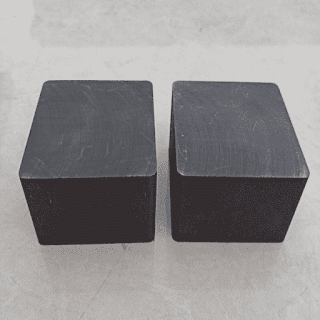Effect of additives on the plasticity of electrode paste
The electrode paste is consumed while roasting (sintering in the electrode barrel made of steel plate) in the submerged arc furnace, so it is also called continuous self baking electrode. The unique roasting and use mode of electrode paste puts forward very high requirements for its plasticity. If the plasticity is too poor, the electrode paste does not have enough fluidity in the process of heating and softening, and cannot fully fill the inside of the electrode barrel to form a dense whole. After roasting, there are many holes in the electrode, which is prone to "hard breaking" accidents;
If the plasticity is too good, during the softening process of the electrode paste, the asphalt is easy to migrate under the pressure caused by its own weight and the escape of volatile matter, resulting in flowing paste and segregation, which is easy to lead to "soft fracture" accidents [1-2]. Plasticity is a very important index of electrode paste. At present, most factories judge the plasticity of paste according to their actual production experience, and adjust the plasticity of paste by adjusting the amount of asphalt or adding additives. The plasticity of electrode paste is closely related to its elongation, which can be characterized by elongation. The key point of the electrode paste elongation test is to press it into a cylindrical shape of the specified size, and measure its relative elongation after holding at 200 ℃ for 1 h on a fixed slope [3]. In this experiment, the plastic quality of electrode paste was studied by changing the amount of asphalt and using different additives


Comments
Post a Comment